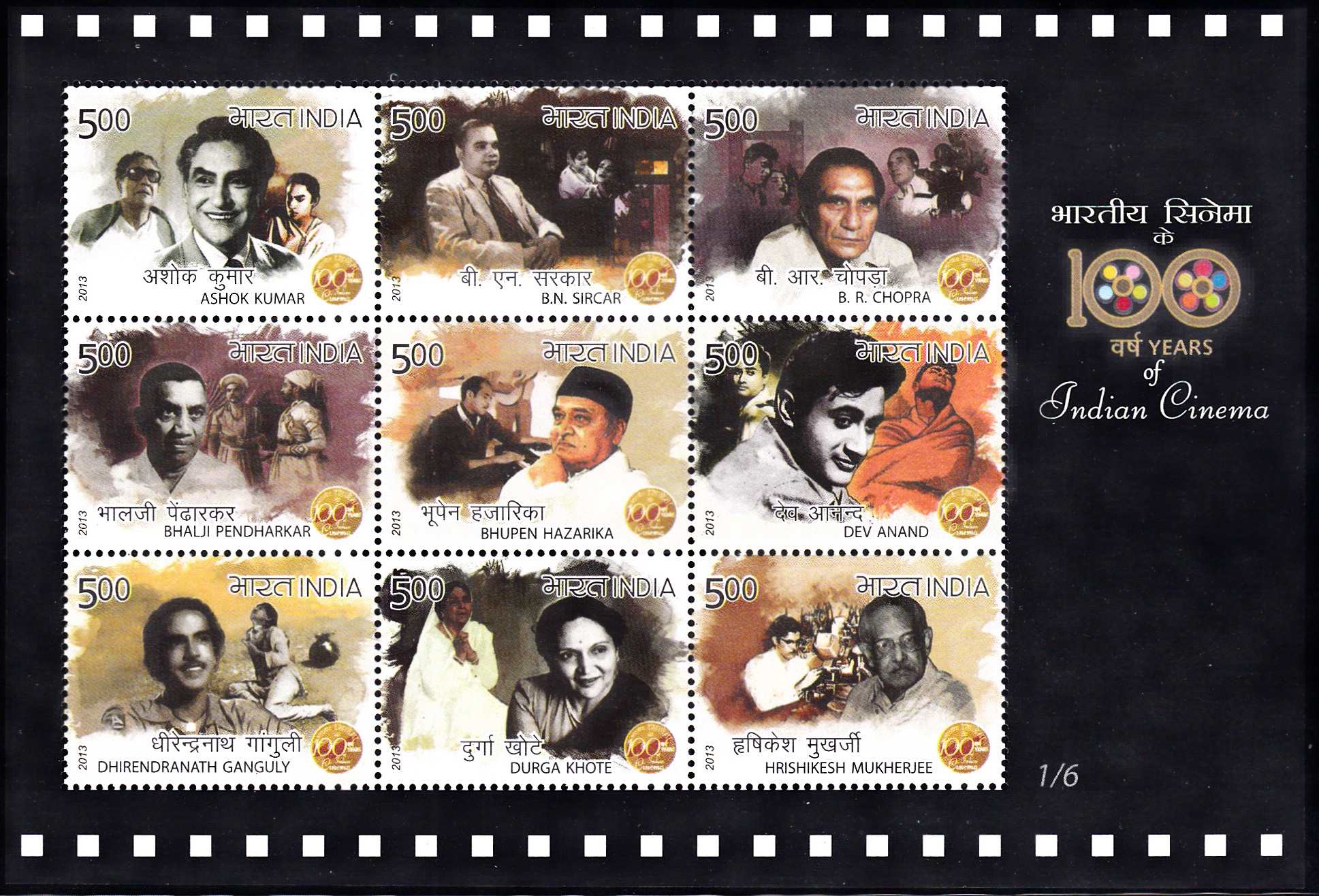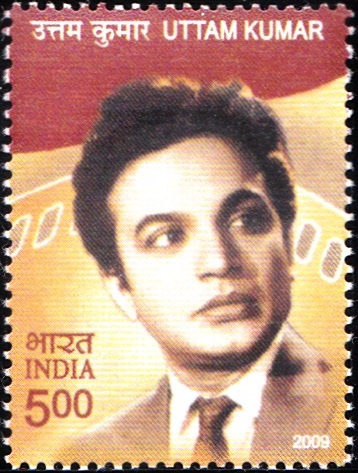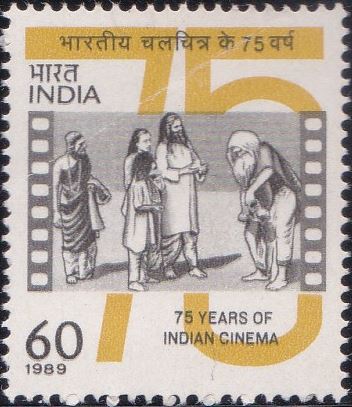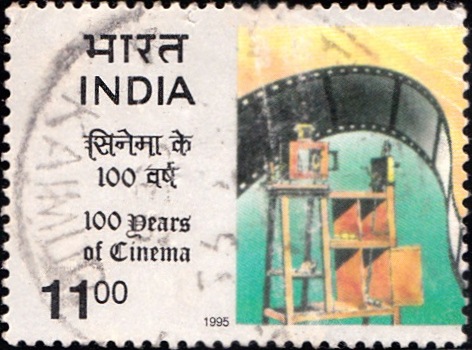
India on 100 Years of Cinema
Complete Set of 2 nos of commemorative postage stamps on the Centenary of Cinema :

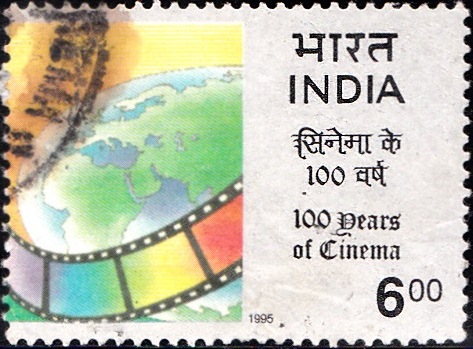
Issued by India
Issued on Jan 11, 1995
Issued for : The Department of Posts has, in 1989, brought out a stamp on 75 years of Indian Cinema and about a year ago a setenant in memory of Satyajit Ray. The Department is privileged to issue a setenant of commemorative stamps on this occasion to mark the 100 years of Cinema.
Design Credits :
Stamp : Suresh Kumar (Based on photographs from Association Frères Lumière)
F.D.C. : Dinesh Banduni (Based on photographs from Association Frères Lumière)
Cancellation : Alka Sharma
Type : Stamps, Postal Used
Colour : Multi Colour
Denomination : 600 & 1100 Paise
Overall size : 2.9 x 3.91 cms.
Printing size : 2.9 x 3.91 cms.
Perforation : 13.5 x 13.5
Paper : Matt Chromo Indigenous
Number of stamps Printed : 1 Million each
Number per issue sheet : 20
Printing Process : Photo Offset
Printer : Calcutta Security Printers, Kanpur
About :
- There can be little doubt that cinema is one of the most potent and vibrant mediums of communication of this century. What started as just a ‘mechanical toy’ at the turn of the century has become a powerful medium of communication and self-expression evolving its own language and grammar over the decades.
- While several inventors from different countries prepared the way, it was the work of the Lumiere Brothers of Lyon in France which proved to be the turning point and ultimately gave birth to the cinema. They gave the first show of their ‘Cinematographe’ on December 28, 1895 at the Salon Indiens of the Grand Café in Paris.
- Barely six months after the early historic screenings in Europe and America, the Lumiere Brothers organised an exhibition of their invention at Watson’s Hotel, Bombay, on July 7, 1896. The show, which made a lasting impact, was variously described as the “marvel of the century” and “the wonder of the world”. It marked the beginning of cinema in India which grew from strength to strength over the foundations laid by the pioneers such as Harishchandra Sakharam Bhatwadekar, J.F. Madan and Dada Saheb Phalke, the father of Indian cinema.
- The Lumiere programme anticipated many of the future uses of cinema such as newsreel, actuality, fiction and documentary. As the technology and art of film making developed over the years, an understanding grew of the principles of film editing, interrelations of shots and sequence to create meanings and depiction on the screen of spectacle, emotional horror and intense states of feeling. The launching of the sound era in the late twenties was a significant landmark that gave a new impetus to the wave of cinema which had already washed upon distant shores.
- The early and mid-fifties were notable for the emergence of major film makers around the world. A significant hiatus in the history of world cinema also belonged to this decade when a reaction to the conventional narratives and techniques of classical fiction cinema based on dramatic, realist codes, led to a divorce from tradition and creation of original, fresh masterpieces. More recent times have been marked by the coming of age of a Third World Cinema and breaking of new ground in experimentation and understanding of cinema as an art and as a mass medium.
- Indian cinema began to receive extensive international attention with Satyajit Ray’s ‘Pather Panchali’ made in 1955. Ray’s signal contribution to cinema won him worldwide acclaim and the coveted ‘Oscar’. Today, India is the largest producer of feature films in the world averaging about 800 films a year.
- Text Source : Ministry of Information and Broadcasting.



